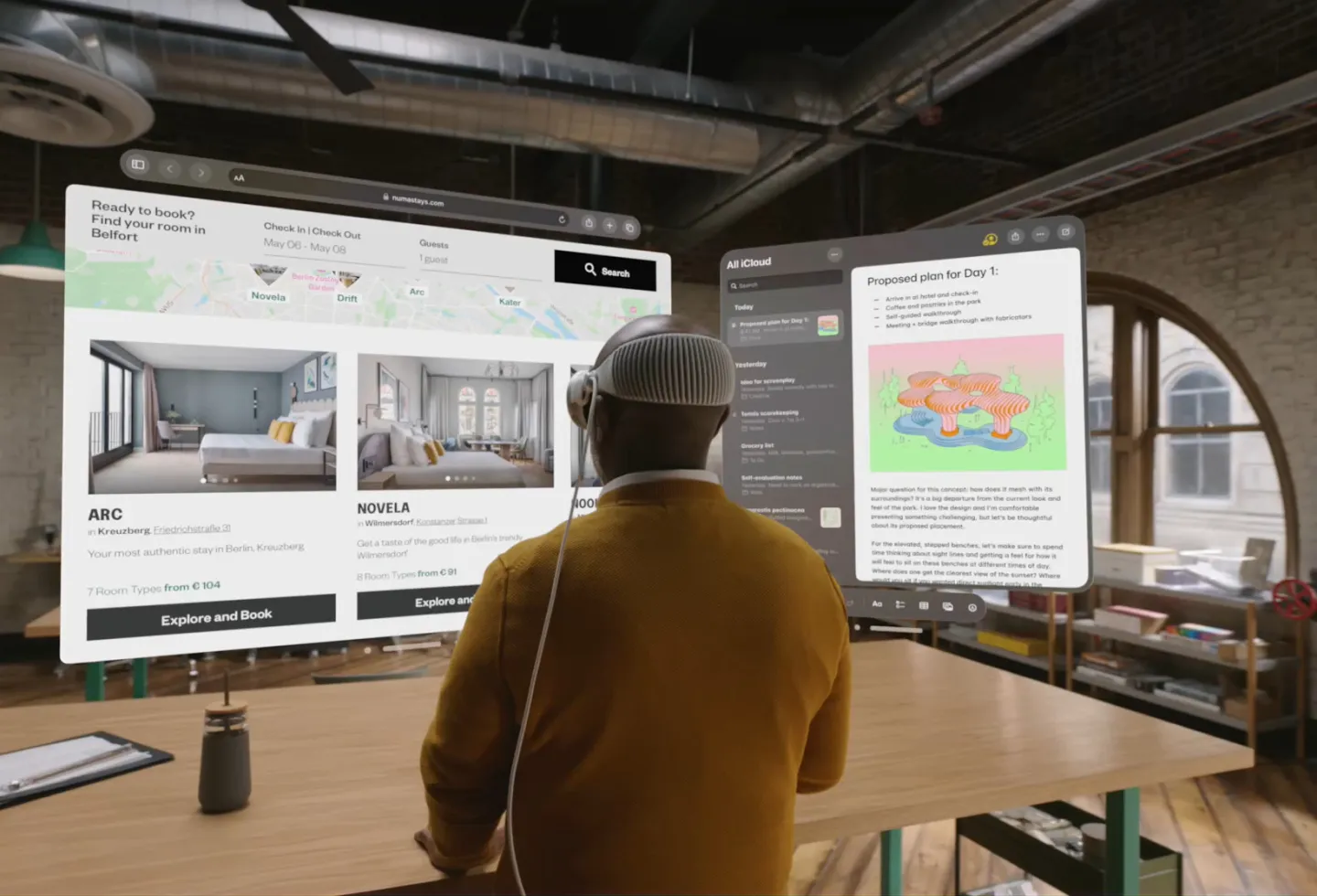Apple’s new Vision Pro is more than your average virtual reality headset. The tech titan envisions it as a “spatial computer” – pioneering technology that weaves digital and physical domains in novel ways.
With Apple advancing immersive experiences, appreciating their excitement around spatial computing becomes meaningful for enterprises wanting to lead.
Apple sees an opportunity with spatial computing and how your organization may leverage similar ideas to develop applications. Insights gained here could illuminate new frontiers for innovation as physical and digital worlds increasingly converge through advanced technical capabilities.
What is Spatial Computing?
Spatial computing refers to the merging of the digital and physical realms, enabling seamless interaction between humans and machines.
Unlike virtual reality, which fully immerses users in a simulated world, or augmented reality, which overlays digital content in the real world, spatial computing aims to create a cohesive, three-dimensional interface that makes digital elements feel present in the user’s physical environment.
Apple has invested heavily in this emerging field, viewing it as the next frontier of personal computing after the smartphone revolution it spearheaded with the iPhone.
Spatial Computing as a Productivity Tool
Apple’s vision for spatial computing is not just about entertainment or gaming.
The company is positioning the Vision Pro as a productivity-focused “spatial computer” that can serve as an alternative to traditional desktops and laptops.
“It unlocks incredible experiences for our users and exciting new opportunities for our developers”.
Apple CEO Tim Cook.
By allowing users to manipulate virtual screens and apps with their hands and eyes, the Vision Pro could fundamentally change how we interact with digital content, according to industry experts.
Towards a Mixed Reality Future
Apple’s foray into spatial computing also signals the company’s belief that mixed reality, where digital and physical worlds converge, will become mainstream in the future.
“My view is that mixed reality, immersive worlds, immersive experiences are inevitable because we humans were not meant to stare at little screens all day”.
Louis Rosenberg, Computer Scientist and Entrepreneur
However, the widespread adoption of spatial computing may also raise concerns about privacy and the potential for manipulation, necessitating new regulations to address these issues.
Key Trends in Spatial Computing
As the spatial computing market continues to evolve, several key trends are emerging that businesses should be aware of.
First, the integration of artificial intelligence and machine learning is enabling more natural and intuitive user interactions, with devices responding to voice, eye movements, and hand gestures.
Apple says the Vision Pro uses a three-dimensional interface that makes users feel as if the digital content they’re viewing, whether it be a movie or their social media feed, is present in their physical world, rather than limited to their phone or tablet screen.
Additionally, the development of high-resolution displays and advanced audio systems is creating more immersive and lifelike experiences.
Perhaps most significantly, the convergence of the digital and physical worlds is opening up new possibilities for collaboration, remote work, and entertainment.
Companies that can effectively leverage these spatial computing capabilities will be well-positioned to drive innovation and gain a competitive edge.
As Apple pushes the boundaries of spatial computing with the Vision Pro, businesses must understand the strategic implications of this emerging technology.
By embracing spatial computing, companies can unlock new opportunities for productivity, collaboration, and customer engagement.
However, they must also be mindful of the ethical considerations and prepare for a future where the digital and physical worlds are increasingly intertwined.



